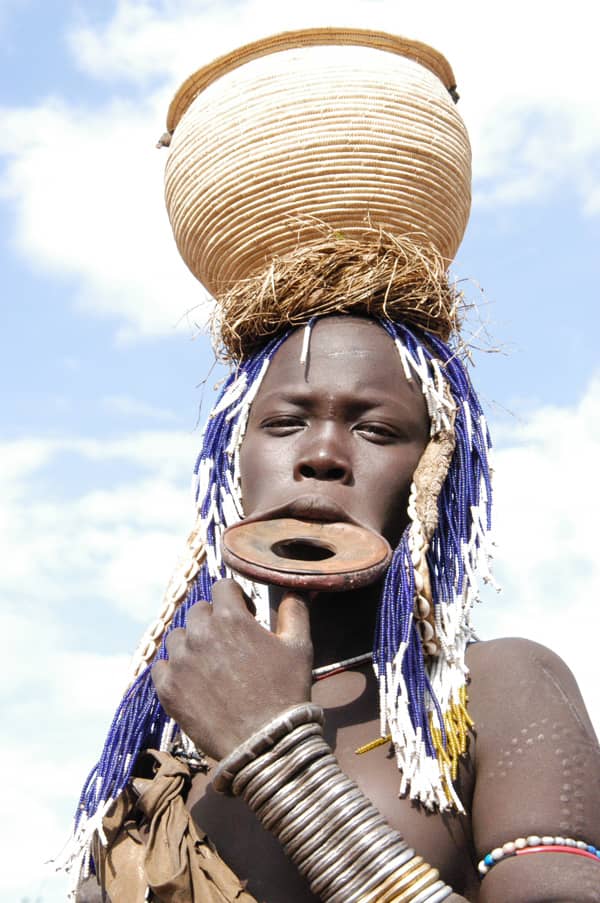In the bossom of the Omo Valley in Ethiopia, exists a striking and captivating tradition that has persisted for generations—the Mursi people’s lip plate tradition. This ancient practice, though perplexing to outsiders, holds a deep significance in the lives of the Mursi and serves as a symbol of beauty, identity, and cultural heritage.
Taking a glimpse at the Mursi people, who are known for their distinctive lip plates, are a semi-nomadic pastoralist community with a population of around 10,000. Living near the banks of the Omo River, the Mursi have managed to preserve their way of life despite the encroachment of modernization. Their isolation has contributed to the unique traditions that define their existence.
At the heart of the Mursi culture lies the intricate art of lip plate modification. This practice involves stretching the lower lip using progressively larger clay or wooden discs, creating an ever-expanding opening. The resulting lip plate, often as large as five inches in diameter, is inserted into the stretched lip. While the exact origin of this tradition is uncertain, it is thought to have originated as a rite of passage for young girls of age 15 to 16 entering womanhood.

For the Mursi people, the lip plate is more than just a cosmetic 5enhancement. It is a powerful symbol of beauty and identity. In Mursi society, larger lip plates are associated with a woman’s ability to attract a husband and are considered a mark of prestige. The size of the lip plate is an indicator of a woman’s resilience and strength in enduring the painful process of stretching her lip.
While the lip plate tradition has maintained its significance, it has also been a subject of controversy and change. As the Mursi people are increasingly exposed to the outside world through tourism and other influences, some argue that the tradition might be endangered or altered. Critics suggest that tourism can lead to the commercialization of the practice and undermine its authentic cultural value.
However,efforts are being made to strike a delicate balance between preserving the Mursi culture and allowing it to evolve naturally. Initiatives aimed at empowering Mursi communities and educating outsiders about the cultural significance of the lip plate tradition have emerged. These efforts aim to ensure that the Mursi people can continue to celebrate their heritage with dignity while also benefiting from their interactions with the wider world.

The Mursi people’s lip plate tradition stands as an evidence of the resilience of cultural identity in an ever-changing world. This captivating tradition, which embodies notions of beauty, strength, and heritage, offers a window into the complexity of human expression and the myriad ways in which communities define themselves.
As we marvel at the Mursi people’s lip plate tradition, let us also remember that it is merely a glimpse into a rich tapestry of customs that shape their lives and connect them to their past and future.




